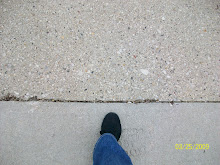
Artist Statement
I really enjoyed my service learning with Johnsons Park. It was truly amazing to be a part of such a revitalizing/reconstructive moment for this community. I enjoyed researching and looking back to its past history and I enjoyed documenting the current progress made. It seems, to me, that this neighborhood is destined to live/exist. Looking at its roots has shown me that the land of Walnut Way was cultivated by strong, hopeful, and courageous people who gave their all to build what it is now known as; the Historical Bronzeville. The struggle has and always will be the theme of Walnut Way/Johnson’s park but it is those very hardships that continue to be the driving force and heart of this community. Prior to this class assignment, I had never been to Johnson’s Park. I can remember my Grandmother telling me that Walnut Street used to be “Booming” as she would say. I remember her telling me it was an exciting place to hang out, shop, listen to music, and live. I could only imagine this “place” she was referring to, until now.
Of course I am aware of the negative connotations associated with “Milwaukee’s Urban Neighborhoods” and to a certain extent I can understand how people can adopt them, but I do feel that places like Johnson’s park spread undying hope. It seems as if it has been an extremely long journey, and an even longer road ahead. I can say that over the course of this semester I have learned the true meaning of perseverance. This neighborhood has seen so many transformations, but I do believe that the light is finally shining through. It is amazing how everyone in the community is coming together. For example, the Police District is working directly with residents to continue to lower crime, Alice’s garden is giving the community the opportunity to learn how to grow their own produce, and long-term residents have the opportunity to remodel/build their homes. I really feel that Johnson’s park embodies the true meaning of community and interconnectedness.
I really enjoyed my classroom studies as well as this final project. Watching documentaries such as, “Who killed Vincent Chin” has made me realize how the media can manipulate/influence the audience’s perceptions without the audience even being conscious of it. A good example of this is lighting and the focus levels of the camera. It made me think about watching the local news. Whenever there is a shooting or robbery in an “urban” area such as Johnson’s park the images are often dim in lighting and very choppy. When they interview residents after a crime takes place there seems to be a prototype that the reporters are drawn to, a somewhat consistent image of a particular group of people...
All in all I consider my experience in the classroom as well as JPNA to be very rich. On a basic level I learned how to blog! I have also learned how to video record and experiment with images and I do feel that I am able to critique and understand film production a little more. Most of all I am happy that I was able to create unbiased images and footage of Johnsons Park. I am proud to say that I have created media that doesn’t continue to further the stereotypes of Urban Communities. I know that as a class, we have all grown and expanded our perspectives. I know that from here on out, I will approach everything I see, read, and hear without preconceived notions; I recognize the importance of truly seeing something for what it is simply, and discovering its present beauty.









